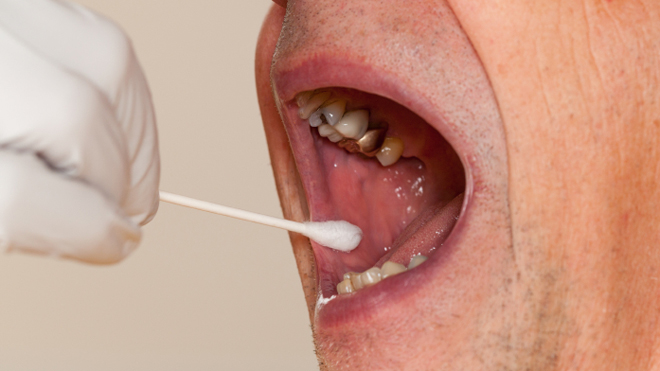Could a simple cheek swab be the key to detecting cancer?

In the world of cancer, especially female cancers, we still have a lot to learn. However, emerging research in this area continues to be quite exciting because we’re trying to get back to the very beginning as to why cancers even develop.
A study out of the University College London Cancer Institute suggests detecting early signs of breast and gynecological cancers may be as simple as analyzing cells taken from a cheek swab. Researchers studied these samples from nearly 800 women, and they saw that those who smoked were more likely to show epigenetic changes in cells that are associated with cancer development. This finding is important because it looks at cellular changes that have to do with proteins in the cell that have been affected by carcinogens— in this case, tobacco.
And what the study authors found was that by looking at those cheek cells, they were able to corroborate those cellular changes into specific cancers in the women that they studied.
Researchers specifically found a “signature” of smoking. By using this signature, they were able to distinguish normal tissue from cancerous tissue with almost near certainty. Their results also included cancers not limited to just those affecting females, but those that affect other parts of the body as well.
Overall, the researchers noted a 40-fold increase in abnormal genetic activities compared to blood samples taken from the same people. That suggests the cheek swab test may be more effective at detecting early cancer than routine blood sample tests.
Now, we know that for cancer to occur, the genetic message has to be initiated telling the the cells to multiply abnormally and out of control— this is why early detection is vital for survival for all types of cancer.
Yes, we have radiographic images, ultrasound images and biopsies we can use to detect these problems and help detect cancer early. But for many patients, unfortunately, it’s the atypical signs and symptoms like sudden weight loss, finding an abnormal mass, having unexplained fever, jaundice or bloody stool or urine that brings them to a doctor who ultimately diagnoses the condition. And in many cases, that diagnosis is cancer in its advanced stages.
For lung cancer in particular, the 5-year survival rate is 54 percent for cases when the disease is still in the lungs— but only 15 percent of these cancers are diagnosed at this stage. When the cancer has spread to other organs, this survival rate drops to 4 percent.
Statistics show early detection for cancers that affect women is just as crucial for survival. Five-year survival rates for breast cancer, for example, are aver 90 percent at stage II, but that number falls to about 20 percent at stage IV. Ovarian cancer survival rates by stage paint a similar picture: At stage I, survival rates are about 90 percent, but they fall to just 17 percent at stage IV. And the problem with ovarian cancer is that often it has no discernable symptoms, so diagnosis in the early stage is uncommon.
Because the choices that we have are quite limited in treating advanced cancer, this research that was presented this month is very exciting.
What this is all saying is very simple: There might be a cellular signature in predetermining certain cancers.
If indeed this research pans out, we will be introducing new screening methods that would look at the environment in which a particular type of cancer might develop, and be able to monitor the disease, perhaps even preventing cancer from fully developing, and saving many lives.
